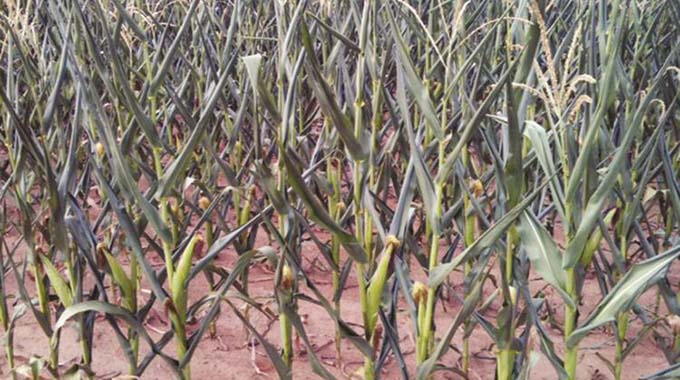Lower cereal harvest forecast for SADC, but . . .

Admire Ndhlovu Correspondent
Southern Africa is expecting a lower cereal harvest for the 2017-18 farming season, but the deficit will be adequately offset by large carry-over stocks from the previous season.
According to the Food Security Outlook and Nutrition Update published by the Southern Africa Food and Nutrition Security Working Group in May, cereal production during the 2017-18 agricultural season is expected to be below average, despite the heavy late rains that benefited the late planted crops.
“This is due to a late start of the rainy season, minimal to no rains during the critical planting season (December-January), high temperatures and the prevalence of fall armyworm,” the working group said.
The working group is made up of the Southern African Development Community (SADC), the Food and Agriculture Organisation, World Food Programme, United Nations Children’s Fund, UN Office for the Coordination of Humanitarian Affairs, Famine Early Warning System Network, Care International, Oxfam and World Vision.
The 2017-18 rainfall season was characterised by a late start, an extended mid-season dry spell (December-January) and heavy rains from February into early May.
The dry spell caused moisture stress and wilting of the early planted crops in many areas in Botswana, south-western Madagascar, southern Malawi, southern and some central parts of Mozambique, Zambia and Zimbabwe.
“The production prospects of the late planted crop improved due to the above-average rains since February. However, cereal production is still forecast to be slightly below or at average levels in 2018,” the report said.
The South African Crop Estimates Committee released a report in April saying that the commercial maize crop is estimated at around 12,8 million metric tonnes, which is some 22 percent lower than the 2016-17 output of around 15,6 million tonnes.
In addition to poor early rains, the cereal harvest in most countries is expected to have been affected by fall armyworm outbreak, according to the Southern Africa Food and Nutrition Security Working Group.
The pest was recorded in most SADC member states, except in Mauritius and Lesotho.
In Malawi, fall armyworm affected 26 percent of the 1,5 million hectares of land under maize while it devours more than 68 000 hectares of crops in Swaziland, according to the report by the working group.
Other countries affected by the armyworm outbreak include Zambia where 113 000 hectares of the maize crop were devoured, and Zimbabwe which lost about six percent of the maize planted.
The pest, which first emerged in the region in the 2016-2017 cropping season, is native to the tropical regions of the Americas.
Fall armyworm affects maize, millet, sorghum, rice, wheat, sugarcane, cowpea, groundnuts, potatoes and soya- beans. It eats the leaves of the plants as well as their reproductive parts.
The working group, however, said the impact of the lower than expected harvest is likely to be offset by significant carry-over stocks in South Africa, Zambia and Zimbabwe that had good harvests during the 2016-17 season.
South Africa is forecast to have opening maize stocks of over four million metric tonnes while Zambia and Zimbabwe are expected to have opening maize stocks of 840 000 and one million tonnes, respectively.
The opening stocks in Zambia and Zimbabwe are enough to cover 40 and 70 percent of the annual cereal requirements for the two countries, respectively.
“Higher stock levels should partly cushion the impact of the expected maize production decreases, averting a larger decline in domestic availabilities,” according to the report.
While regional grain availability is likely to remain adequate, food insecurity is expected to be high among vulnerable households in a number of countries where production shortfalls are expected.
These include Lesotho, southern and central parts of Mozambique, northern and western Namibia, southern parts of Zambia and Malawi, southern and extreme north of Zimbabwe and southern Madagascar.
The final SADC vulnerability assessment is due to be released in July and will provide an update on food insecurity estimates.
To strengthen regional food security, the working group called on SADC member states to take appropriate measures to promote trading of maize and avoid taking ad-hoc actions that would restrict imports or exports of grains within the region.
In addition, the working group called on member states to take advantage of the late ending of the season to develop measures that support off-season crop production.
According to the SADC Secretariat, agriculture contributes up to 17 percent of the gross domestic product of the region.
In addition to this, more than 70 percent of the region’s population, now numbering some 327 million, are dependent on agriculture for their livelihoods. – SADC Today.









Comments